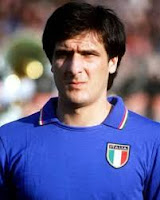Bruno Vespa – television journalist
TV host opened the door to late night political debate
Bruno Vespa, the founding host of the television programme Porta a Porta, was born on this day in 1944 in L’Aquila in Abruzzo. Vespa, who celebrates his 72nd birthday today, has fronted the late night television talk show, which literally means ‘Door to Door’ in English, since Italy's state broadcaster Rai launched the programme in 1996. Vespa became a radio announcer with Rai when he was 18 and began hosting the news programme Telegiornale RAI a few years later. He had begun his career in journalism by writing sports features for the L’Aquila edition of the newspaper, Il Tempo, when he was just 16 years old. On television, he became well known for interviewing influential world figures just before they became famous, an example being his programme featuring Cardinal Karol Wojtyla, the year before he was elected as Pope John Paul II. In June 1984, Vespa was official commentator for the live televised broadcast of the state funeral for Enrico Berlinguer, the former leader of the Italian Communist party. Vespa has won awards for his journalism and television programmes and has also written many books. Read more…
_________________________________________________________________
Giuseppe Tornatore - writer and director
Oscar winner for Cinema Paradiso
The screenwriter and director Giuseppe Tornatore, the creator of the Oscar-winning classic movie Cinema Paradiso, was born on this day in 1956 in Bagheria, a small town a few kilometres along the coast from the Sicilian capital Palermo. Known as Nuovo Cinema Paradiso in Italy, Tornatore’s best-known work won the award for Best Foreign Language Film at the 62nd Academy Awards following its release in 1988. The movie, written by Tornatore, tells the story of Salvatore, a successful film director based in Rome who returns to his native Sicily after hearing of the death of the man who kindled his love of the cinema, the projectionist at the picture house in his local village, who became a father figure to him after his own father was killed on wartime national service. Much of the film consists of flashbacks to Salvatore’s life as a child in the immediate post-war years and there is a memorable performance by Salvatore Cascio as the director’s six-year-old self, when he was known as Toto, as he develops an unlikely yet enduring friendship with Alfredo, the projectionist, played by the French actor Philippe Noiret. Read more…
________________________________________________________________
Lucrezia Crivelli – lady in waiting
Mystery of the beautiful woman in painting by Leonardo
Lucrezia Crivelli, mistress of Ludovico Sforza, Duke of Milan, who was for a long time believed to be the subject of a painting by Leonardo da Vinci, died on this day in 1508 in Canneto sull’Oglio in Lombardy. Crivelli served as a lady in waiting to Ludovico Sforza’s wife, Beatrice d’Este, from 1475 until Beatrice’s death in 1497. She also became the Duke’s mistress and gave birth to his son, Giovanni Paolo, who went on to become the first Marquess of Caravaggio and a celebrated condottiero. Crivelli lived for many years in the Castello of Canneto near Mantua under the protection of Isabella d’Este, the elder sister of Beatrice, until her death in 1508. Coincidentally, her former lover, Ludovico Sforza, is believed to have died on the same day in 1508 while being kept prisoner in the dungeons of the castle of Loches en Touraine in France, having been captured by the French during the Italian Wars. It was never proved, but it was assumed for many years that Crivelli may have been the subject of Leonardo da Vinci’s painting La belle Ferronnière, which is displayed in the Louvre in Paris. Read more…
Home























